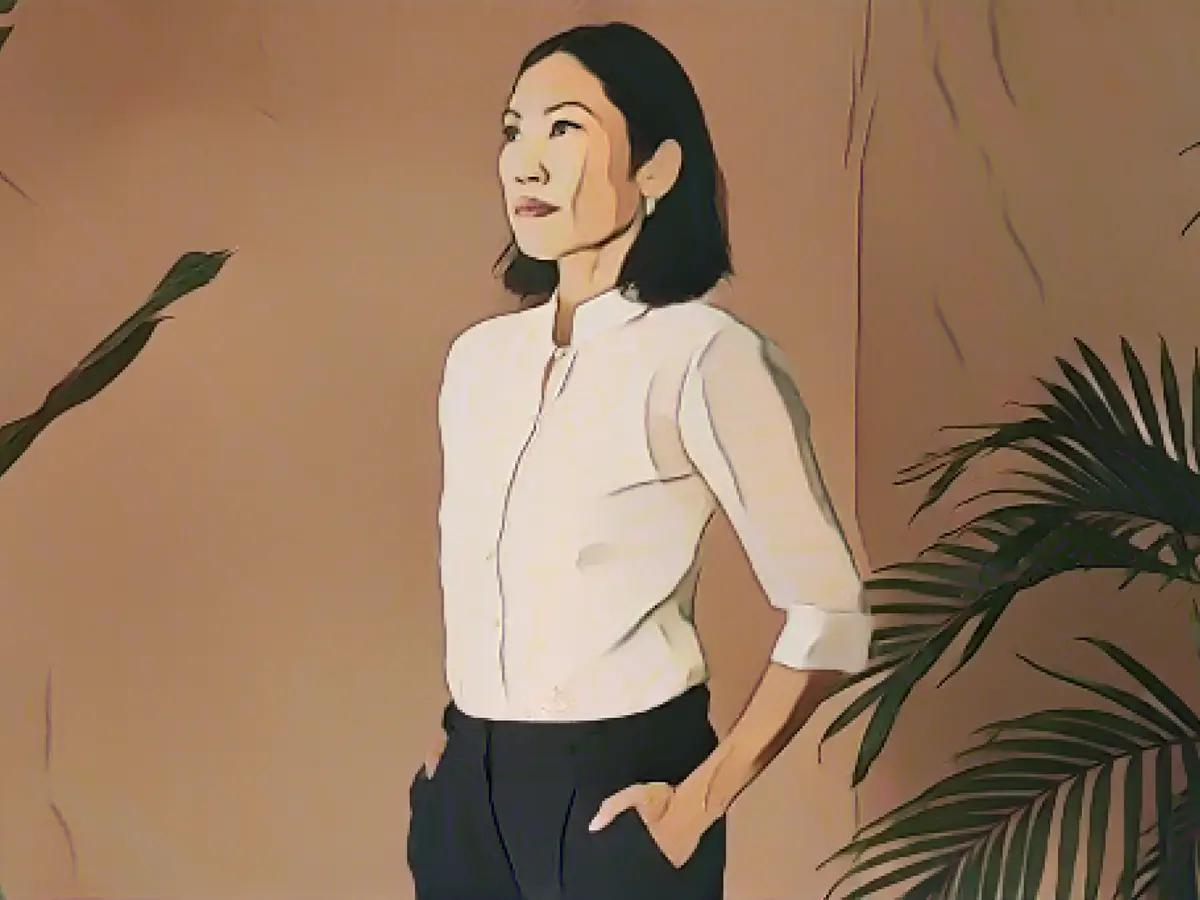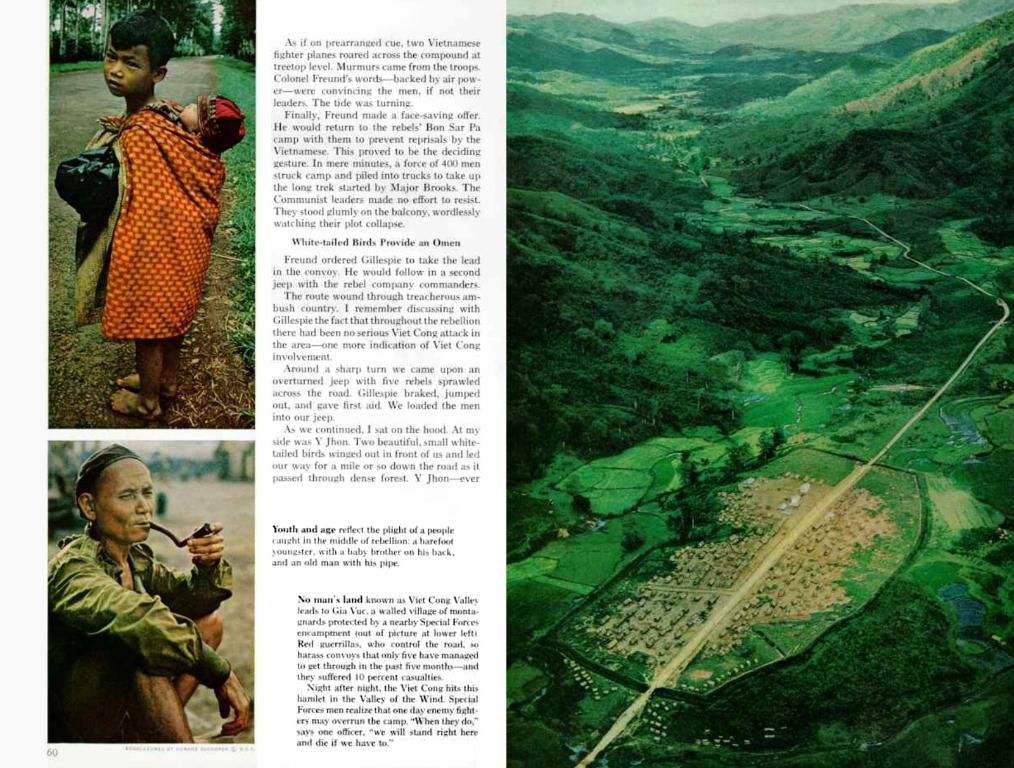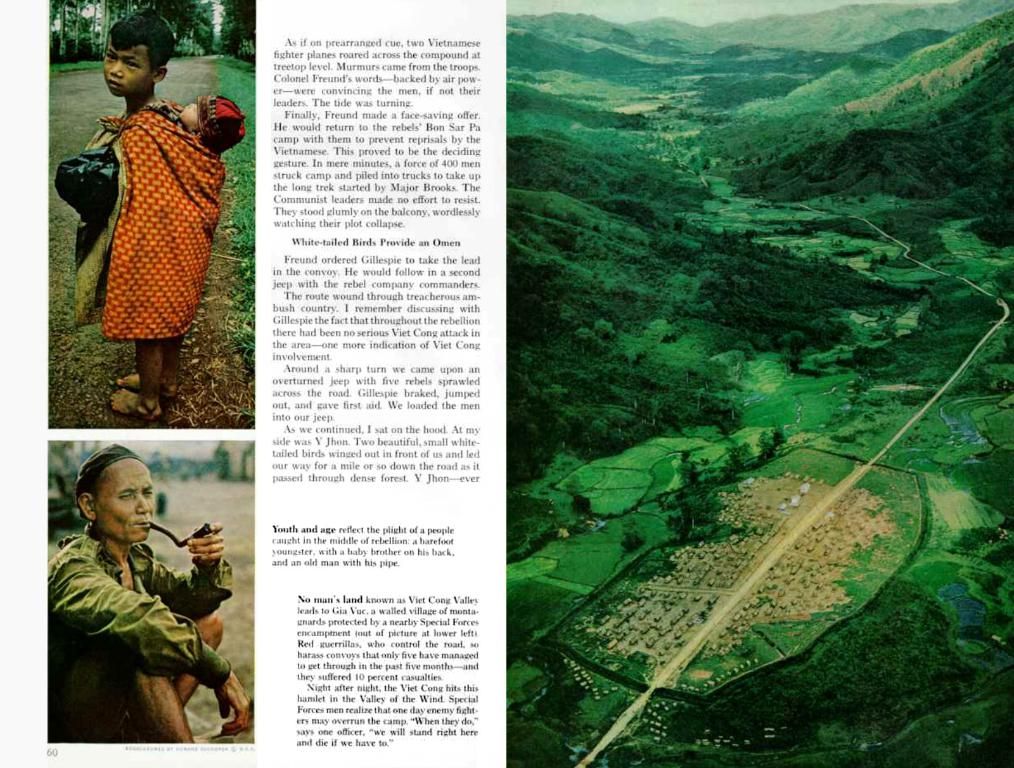Filipino-American Creatives Reinvigorate the Barong
Hey there,
As a first-generation Filipino-American kid, I grew up listening to my parents' tales of their homeland, stories filled with rich details that seemed to resemble the magical lands described in fairy tales. These stories were told with a tone that reflected their desire to utilize Western opportunities, but also a life where they didn't feel like outsiders – a life where adjusting to American culture wasn't a daily struggle.
Many of these stories centered around my great uncle, Philippine President Ramon Magsaysay, whose character played a significant role in shaping the Barong Tagalog, a see-through button-down shirt often adorned with hand-embroidered patterns and now considered the official formal wear of the country.
Lately, the Barong Tagalog, popularly known as "Barong," has gained popularity among Filipinos abroad as a symbol of national pride and style.

"Barong is inherently glamorous," explains fashion stylist and commentator Rap Sarmiento. "Its transparency and embroidery make it trendy. The second generation of kids is on board."
Generally, it's believed that the roots of Barong date back to pre-colonial Philippines, serving as both a status symbol and everyday clothing. The transparent fabric was either a practical design choice in response to the hot and humid climate or a means of oppression used by Spanish colonizers to prevent Filipino natives from hiding objects or weapons under their clothing.
"The Spanish brought (the Barong) to all their colonies … and other countries had their own versions," said Caroline Mangosing, founder and designer of Vinta Gallery, a Canadian boutique-style brand specializing in Philippine clothing. "Cuba has the Guayabera with pockets. The Dominican Republic has a pleated version."
At his inauguration in 1953, President Magsaysay wore a Barong hat to show solidarity with the common people. This act sparked widespread acceptance of the Barong as a Filipino alternative to the formal suit or smoking jacket and became a fashion choice that stood out against the Westernized suits and ties on the world stage.

Magsaysay's inauguration was just one of many occasions where he used the Barong to symbolize Philippine independence and resilience during the nearly 50 years of US colonial rule in the Philippines. To support his Philippine-focused economic policy, Magsaysay and his government invested in clothing and textile factories that primarily used locally-sourced materials like Piña (pineapple fiber), Abaca (hemp), and Jusi (hemp), which were traditionally used in Barong production. His son, former Philippine Senator Ramon Magsaysay Jr., said:
"He advocated for the support of Philippine nationalism for our country and people," said Magsaysay Jr. "At his inauguration, we could see how proud he was to show off his locally-made clothing and shoes."
Barong's development since Magsaysay's presidency has been as colorful and complex as its past. For example, President Ferdinand Marcos used the outfit, but its popularity waned among many Filipinos during his time.
"There's political baggage," said Mangosing about Marcos and his wife Imelda, whose affection for traditional Filipino clothing led to its deportation after their departure from the country. "People didn't want to be associated with it for a while, so it stopped evolving — what was left was the mass-market version in bright colors."
But in recent years, as more Filipinos entered the US and global music, film, and pop culture industries, the Barong experienced a resurgence in creative, personal, and inspiring ways.

Vinta Gallery, based in the Philippines, creates handmade Barongs with prices ranging from $300 to $600 for tailored models and over $1,000 for custom ones. Mangosing told CNN that Barong items are among the brand's best-sellers, especially those with ant-inspired or other symbolic embroidery.
Last year, Nordstrom Men's Department Director Jian DeLeon worked with the Bode brand to create a shirt inspired by the traditional Barong but made from a unique blend of linen and cotton.
"I was inspired by French designer Pierre Cardin in the 1970s when he redesigned the silhouette," said De Leon. "Cardin combined elements like standing collars and French cuffs with embroidery to adopt a global style. I think these projects can bring these typically Filipino, culturally-rich garments into a global context."
In Los Angeles last fall, fashion stylist Rap Sarmiento attended the Nike "Philippino Power" dinner, honoring Filipino-Americans in music, fashion, and entertainment. He wore his father's Barong over a Rude T-shirt, black track pants, and black Margiela Tabi boots.
"It's a way to push the boundaries," Sarmiento said.
At the same event, designer and influencer Aleali May wore a Barong-style outfit with distressed jeans, hoop earrings, and limited-edition Nike Air Force 1 sneakers.
Related Articles
The recent revitalization of the Barong can be seen in the Nordstrom men's collection, which offers shirts inspired by the traditional Barong but made from unconventional linen-cotton blends.
The creative work of groups like Vinta Gallery has helped popularize Barong Tagalog in the US and around the world by modernizing and personalizing traditional Philippine fashion.
References
With a revival of pride in their cultural heritage, Filipinos have started incorporating the Barong into their formal wear, reintroducing it to the global stage in exciting and personal ways. The Barong has become a powerful symbol of Filipino identity, showcasing the rich and varied history of the Philippines while embracing the future.








